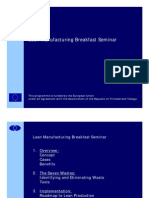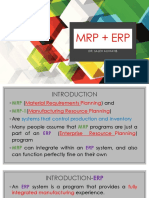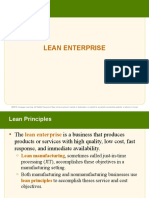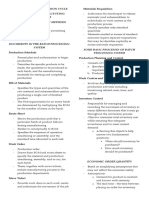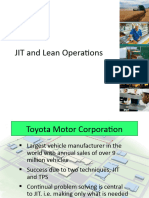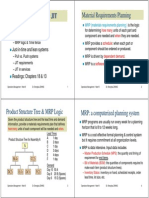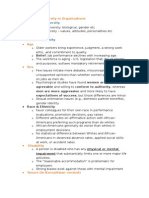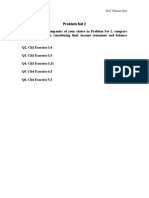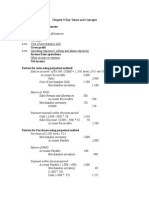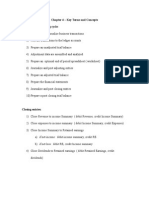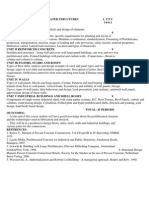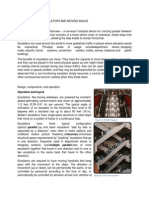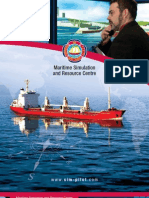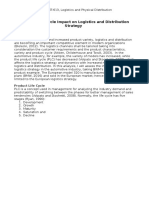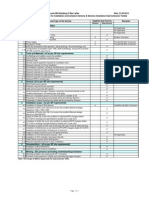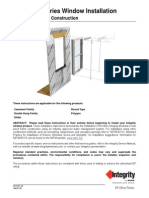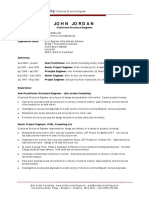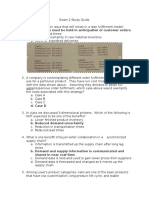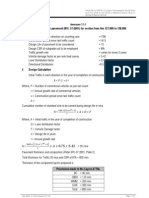BUSS211
OM
Lecture 4
Lean Operations
MRP vs. JIT
Professor Kihoon Kim
Lean Operations
Slide 1
�Outline
Independent demand vs. dependent demand
MRP (Push) vs. JIT (Pull)
How MRP works?
How JIT works?
Lean Operations Tactics
Lean Operations
Slide 2
�Independent vs. Dependent Demand
Independent
Dependent
1. End or finished items
1. Subassemblies,
Components/Materials
2. May be uniform demand
2. Lumpy demand
3. Few items - carefully monitored
3. Many items less emphasis
Lean Operations
Slide 3
�Material Requirements Planning for Components
EOQ analysis for Finished Goods
1. For items with independent demand
Deterministic demand
Probabilistic demand
Standard EOQ
EOQ with safety stock
2. Answers one question: How much is needed
MRP for Components
1. For inventory systems with dependent demand
2. Answers two questions: How much & When
Lean Operations
Slide 4
�MRP vs. JIT
MRP. (Materials Requirements Planning). MRP is the basic
process of translating a production schedule for an end product
(MPS or Master Production Schedule) to a set of requirements
for all of the subassemblies and parts needed to make that item.
JIT. Just-in-Time. Derived from the original Japanese Kanban
system developed at Toyota. JIT seeks to deliver the right amount
of product at the right time. The goal is to reduce WIP (work-inprocess) inventories to an absolute minimum.
Lean Operations
Slide 5
�Push vs. Pull
MRP is the classic push system. The MRP system computes
production schedules for all levels based on forecasts of sales of
end items. Once produced, subassemblies are pushed to next
level whether needed or not.
JIT is the classic pull system. The basic mechanism is that
production at one level only happens when initiated by a request
at the higher level. That is, units are pulled through the system
by request.
Lean Operations
Slide 6
�Advantages of MRP and JIT
Main Advantage of MRP over JIT: MRP takes forecasts for end
product demand into account. In an environment in which
substantial variation of sales are anticipated (and can be
forecasted accurately), MRP has a substantial advantage.
Main Advantage of JIT over MRP: JIT reduces inventories to a
minimum. In addition to saving direct inventory carrying costs,
there are substantial side benefits, such as improvement in
quality and plant efficiency.
Lean Operations
Slide 7
�MRP Basics
The MRP system starts with the MPS or Master Production
Schedule. This is the forecast for the sales of the end item over
the planning horizon. The data sources for determining the MPS
include:
Firm customer orders
Forecasts of future demand by item
Safety stock requirements
Seasonal variations
Internal orders from other parts of the organization.
Lean Operations
Slide 8
�The Explosion Calculus
The explosion calculus is a set of rules for converting the master
production schedule to a requirements schedule for all subassemblies,
components, and raw materials necessary to produce the end item.
Work backward from finished goods production schedule (assumed
fixed)
Each finished good has its Bill of Materials
Each component has quantity multiplier & lead time
There are two basic operations comprising the explosion calculus:
Time phasing: Requirements for lower level items must be shifted
backwards by the lead time required to produce the items
Multiplication: A multiplicative factor must be applied when more than
one subassembly is required for each higher level item.
Given how much is ordered, determine when inputs are needed
Determine when you would run out of the input given the fixed production
schedule
Lean Operations
Slide 9
�Typical Product Structure Diagram (Bill of Materials)
Lean Operations
Slide 10
�Developing a Materials Requirements Plan
Work downwards through the production hierarchy, starting
with finished goods. For each item, carry out the following
steps:
1. Use projected requirements and scheduled receipts to
calculate on-hand inventory (finished good):
General On-Hand Inventory: I t I t 1 St Dt
Lean Operations
Slide 11
11
�Developing a Materials Requirements Plan
2. Look forward to find the first period in which on-hand
inventory will be negative. Then work backward using the
ordering/ production lead time to generate a planned order
release. The order size is determined by lot sizing analysis.
(In this example, lets assume that 70 has been chosen.)
Lean Operations
Slide 12
�Developing a Materials Requirements Plan
3. Update on-hand inventory and continue generating planned
order releases for this item to the end of the time horizon.
(we assume that 90 and 30 have been chosen)
Lean Operations
Slide 13
�Developing a Materials Requirements Plan
3. Update on-hand inventory and continue generating
planned order releases for this item to the end of the time
horizon. Then calculate projected requirements for items
in the next level down in the production hierarchy.
Lean Operations
Slide 14
�Enterprise Resource Planning (ERP)
ERP is an extension of the ideas of MRP. It aims to integrate all functions
of the business, including planning, manufacturing, sales, and marketing.
1960s Focus on traditional inventory control, single item
1970s MRP emerges: translates Master Production Schedule into timephased net requirements for sub-assemblies, components, and raw materials
1980s Manufacturing Resources Planning (MRP II) emerges: extension
of MRP to shop floor and distribution management activities
1990s Enterprise Resource Planning (ERP) emerges: extension of MRP
II to cover areas such as Engineering, Finance, Sales and Marketing, etc.
Lean Operations
Slide 15
15
�Closed-Loop Manufacturing Planning & Control System
Production Planning
Master Production Scheduling
Material Requirements Planning
Capacity Requirements Planning
Revise
Lean Operations
No
Realistic
?
Yes
Execute Plans
Slide 16
�Introduction to JIT
JIT (Just In Time) is an outgrowth of the Kanban system developed by
Toyota.
Kanban refers to the posting board where the evolution of the manufacturing
process would be recorded.
The Kanban system is a manual information system that relies on various
types of cards.
Direction of production flow
upstream
downstream
Authorize
production
of next unit
Lean Operations
Slide 17
�River/Inventory Analogy
Illustrating the Advantages of Just-in-Time
Lean Operations
Slide 19
�Reducing waste: Increase Problem Visibility
Analogy: Lower the Water to Expose the Rocks
Missed Due
Dates
Inventory
Late
Deliveries
Scrap &
Rework
Poor
Quality
Lean Operations
Too Much
Space
Too much paperwork
Engineering
Change
Orders
100% inspection
Slide 20
Long queues Machine
Downtime
�JIT purchasing system
If we apply JIT to suppliers,
Advantages:
1. Inventory reduction
2. Improved coordination
3. Better relationships with vendors
Disadvantages:
1. Decreased opportunity for multiple sourcing
2. Suppliers must react quickly
3. Potential for congestion
4. Suppliers must be reliable.
Lean Operations
Slide 21
�Lean Operations Tactics
Supply Chain Management
Slide 22
�Basic Tools towards Lean Operations
In addition to Pull rather than push
1. Batch-size reduction
2. Mixed Level Production
3. Quality at source
4. Resource flexibility / Cross training
5. Cellular layout
Lean Operations
Slide 23
�Lean Tool #1: cut batch sizes
An illustrative example
Remind that a small batch implies a small amount of inventory.
Consider the following 4-step process:
A
1 min/job
Resource 1
B
1 min/job
Resource 2
C
1 min/job
Resource 3
D
1 min/job
Resource 4
(Dont worry; well learn how to answer question below soon)
What is the theoretical flow time of the process?
What is the capacity of the process?
What does that imply for the amount of inventory needed in the process?
Lean Operations
Slide 24
�Lean Tool #1: cut batch size
ABCD example continued
Flow Shop (Batchsize = 1)
Batch Shop (Batchsize=4)
B
2
3
T=
Lean Operations
I=
T
Elapsed Time
Elapsed Time
R=
T=
Slide 25
I=
R=
�How to run Lean Operations:
Managing Variety
Monthly Production Requirement:
Model
Sedan
Quantity
10,000
Station
Wagon
10,000
How should production be scheduled for the month?
Lean Operations
Slide 26
�Lean Tool #2: Mixed Level/Balanced Production
Batch Production Schedule
Mixed Production Schedule
(AAAABBBB..)
Product
(ABAB...)
April 1.................15...........................30
April 1....................15.......................30
A
B
FGI
FGI
time
time
Lean Operations
Slide 27
�Lean Tool #3: Quality at the Source
Defects
Found at:
Own Station Next Station End of Line
Final
Inspection
End Users
Hand
Impact to the Very
Company
Minor
Lean Operations
Minor
Delay
Rework
Significant
Resched.
Rework
Delay in
of work
Delivery
Additional
Inspection
Slide 28
Warranty
costs
Administra
tive costs
Reputation
Loss of
Market
Share
�Lean Tool #4: Flexible Resources
Cross training of workforce
Use of IT in services
Under JIT, if a problem occurs,
the line stops; all the workers involved in the problem join the discussion to
find out why the problem has occurred.
Lean Operations
Slide 29
�Lean Tool #5 to reducing waste:
From Functional Layout to Product Cell organization
A cell focuses on a narrow range of
customer needs
High utilization of critical resources
Department 1
Production
Control
Production
Control
Production
Control
Production
Control
Roof
Cut
Department 2
Roof
Cut
Roof
Cut
Roof
Cut
Department 3
Base
Cut
Base
Cut
Department 5
FA
Base
Assy
FA
Base
Assy
Production
Control
Base
Assy
Roof
Cut
FA
Lean Operations
Base
Assy
FA
Base
Cut
Department 4
FA
Cell 1
Slide 30
Cell 2
Base
Cut
Production
Control
Base
Cut
Roof
Cut
Base
Assy
FA
Cell 3
Base
Cut
Base
Assy
�Pros and Cons of Cellular Layouts
Pros of cells:
Synchronization of information and material flows
Less travel distances
more visibility within the cell
cross-trained workforces.
Cons of cells:
may require additional capital
risk of machine break-downs
Idle time may increase for some cells
Lean Operations
Slide 31
�Teams in Cells and Lean Ops:
Human Resources issues
Advantages
Consistent with the moral ideal of autonomy.
Empowers the workforce through participation and autonomy in managing
daily activities
Gives unprecedented responsibility to workers:
Immediate and impartial feedback of problems
Investigation of process improvements
Monitoring quality
They also gain better understanding of the process
Challenges:
Team dynamics: incentives, team pressure,
From monthly 30-day goals before to 3-minute goals now
Does not leave much room for variability
Lean Operations
Slide 32
�Key Takeaways: Lean Operations
MRP vs. JIT
MRP is a Push system; works well even when the demand variation is high
JIT is a Pull system; reduce inventory visibility increases, flow time
decreases
Lean Operations: In Search for the Holy Grail and zero Waste
Efficient Workflow: Cellular Layout
Level Mixed Production: Heijunka
Flow Synchronization
Reduced batch sizes
Pull Execution: Kanbans
Quality at source: Jidoka
Continuous Improvement: Kaizen
Lean Operations
Low Cost
Get ever closer to ideal
Slide 33




